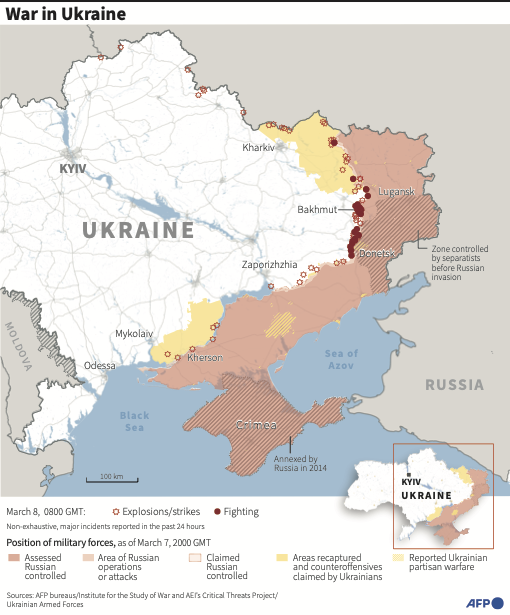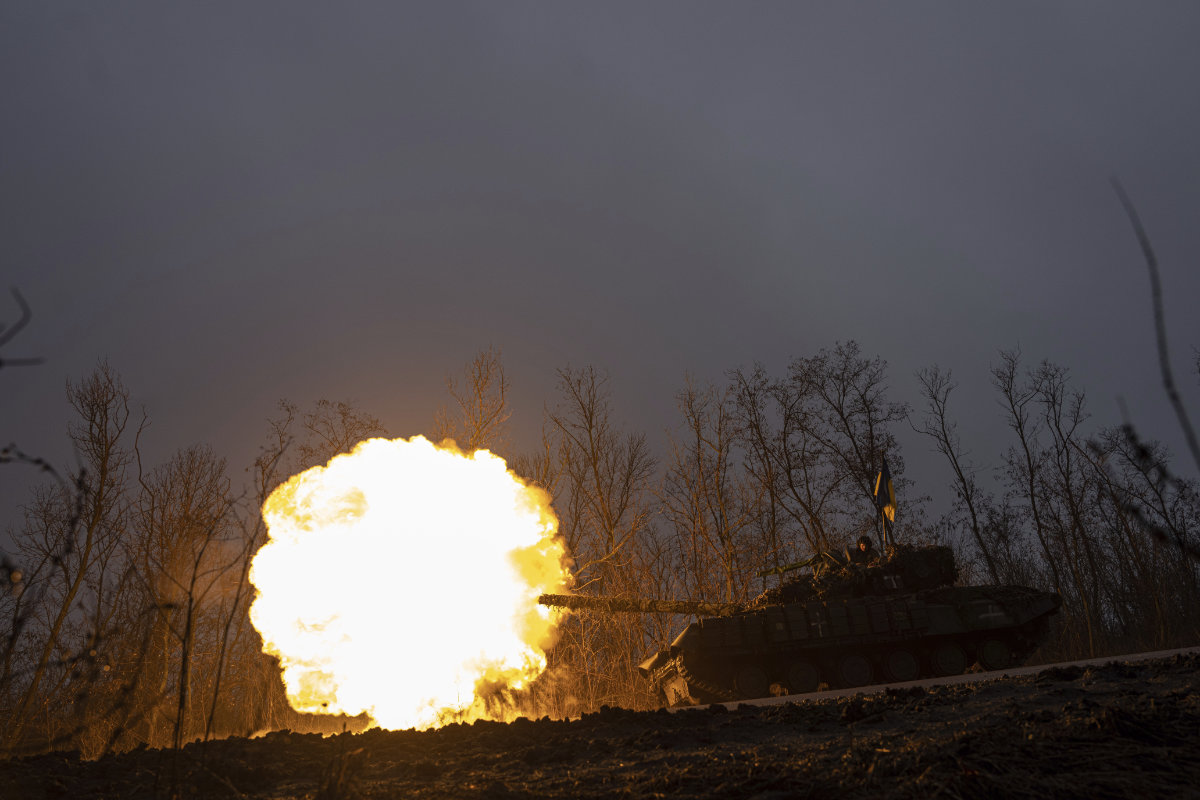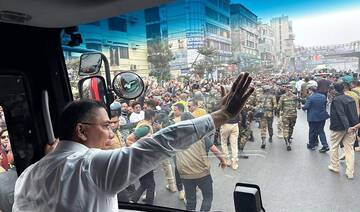KYIV, Ukraine: NATO Secretary General Jens Stoltenberg warned Wednesday the eastern Ukrainian city of Bakhmut might fall to Russia in the coming days following months of intense fighting.
His remarks came as Russia’s Wagner mercenary group, which has spearheaded the attack on Bakhmut, claimed to have captured the eastern bank of the industrial town, devastated in the longest battle since Moscow invaded Ukraine a year ago.
Wagner chief and Kremlin ally Yevgeny Prigozhin said on social media Wednesday that his forces “have taken all of the eastern part of Bakhmut,” a salt-mining town with a pre-war population of 80,000.
The intense fighting around Bakhmut has been the longest and bloodiest in Russia’s more than year-long invasion, which has devastated swathes of Ukraine and displaced millions of people.
“What we see is that Russia is throwing more troops, more forces and what Russia lacks in quality they try to make up in quantity,” Stoltenberg told reporters in Stockholm on the sidelines of an EU defense ministers meeting.
“We cannot rule out that Bakhmut may eventually fall in the coming days,” the head of the US-led military alliance said, adding that “this does not necessarily reflect any turning point of the war.”
Ukrainian President Volodymyr Zelensky warned in an interview with CNN of what could happen if Bakhmut falls to Russian forces.
“We understand that after Bakhmut, (Russian forces) could go further” and attack nearby cities in the Donetsk region, he said.
“They could go to Kramatorsk, they could go to Sloviansk, it would be an open road for the Russians after Bakhmut to other towns in Ukraine, in the Donetsk direction,” Zelensky said in an interview set to air Wednesday.

Russian Defense Minister Sergei Shoigu told military officials during a televised meeting on Tuesday that taking control of the city would allow for “further offensive operations” in eastern Ukraine.
Prigozhin has estimated that between 12,000 and 20,000 Ukrainian troops were still defending the town.
Zelensky told CNN that his armed forces were resolved to stay in Bakhmut.
“Of course, we have to think about the lives of our military. But we have to do whatever we can whilst we’re getting weapons, supplies, and our army is getting ready for the counter-offensive.”
Zelensky on Wednesday hosted UN chief Antonio Guterres in Kyiv, his third visit to Ukraine since Russia’s invasion. Guterres stressed the need to extend a deal that has allowed Ukraine to export its grain but is due to expire.
“I want to underscore the critical importance of the rollover of the Black Sea Grain Initiative on 18 March,” Guterres said.
EU defense ministers were meeting in Stockholm to discuss a plan to rush one billion euros’ worth of ammunition to Ukraine as pressure mounts on Kyiv’s allies to bolster supplies to the war effort.
Ukraine’s Western backers warn that Kyiv is facing a critical shortage of 155-millimeter howitzer shells as it fires thousands each day in its fight against the grinding Russian offensive.

A Ukrainian tank fires towards Russian positions at the frontline near Bakhmut, Ukraine, on March 8, 2023. (AP Photo/Evgeniy Maloletka)
“The current rate of consumption compared to the current rate of production of ammunition is not sustainable, and therefore we need to ramp up production,” Stoltenberg said.
But a report by The New York Times on Tuesday claiming US officials had seen new intelligence indicating a “pro-Ukrainian group” was behind last year’s sabotage of the Nord Stream gas pipelines could raise difficult questions among the allies.
“This is not our activity,” Ukraine’s Defense Minister Oleksiy Reznikov told reporters in Stockholm.
In the interview with CNN, Zelensky invited US House speaker Kevin McCarthy to visit Ukraine and see for himself what the war is like. McCarthy has not opposed US aid to Ukraine but he has said more than once that Congress should not be writing “blank checks” to support the war without close scrutiny.
“Mr McCarthy, he has to come here to see how we work, what’s happening here, what war caused us, which people are fighting now, who are fighting now. And then after that, make your assumptions,” Zelensky said,
Ukraine on Wednesday said it had identified the man shot dead in a video that sparked outrage on social media as one of its soldiers.
The footage shows what appears to be a detained Ukrainian combatant standing in a shallow trench and smoking, and then being shot after saying “Glory to Ukraine.”
“Based on a preliminary examination, we believe that the video may be authentic,” a spokeswoman for the UN Human Rights Office told AFP on Wednesday.


















